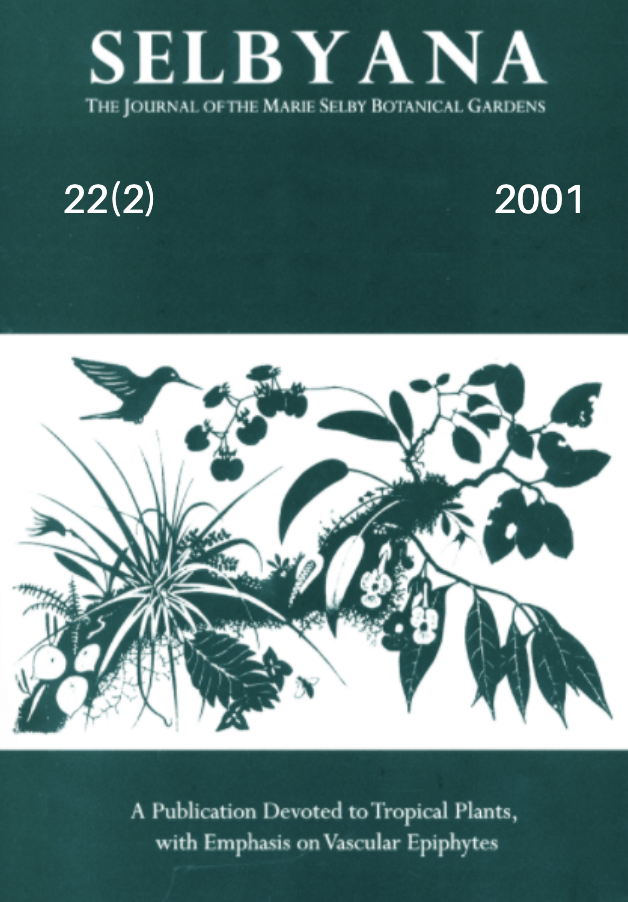Abstract
The way ecologists studying forests choose to define canopy biology could lead them to overlook other communities of spatially fixed organisms that may have properties usefully compared to or contrasted with forest canopies. This paper represents a series of reviews on the possible nature and limits of canopy biology and introduces the prospect for a general comparative science of biological canopies. • Five rationales for the common practice of limiting discussions of canopy biology to terrestrial forests are considered: if people have unique interactions with or concerns about forest canopies; if a substantive basis exists for treating trees as a distinct category of plants; if a substantive basis exists for treating trees as a distinct category within forests; if a substantive basis exists for treating forests as a distinct category of terrestrial community; or if attributes of tree crown residents or groundrooted plants in a forest prove distinct. In no case is there unequivocal evidence for the usefulness of separating the study of forest canopies from the study of the aerial parts of other terrestrial plant communities. • Instead of restricting the sphere of canopy biology to plants in terrestrial systems, "canopy" can be defined in terms of any sessile organisms and the structural products derived from them. This opens the field to a range of communities that could share many properties with forest (or plant) canopies. A brief review is made of the canopy literature on kelp forests, algal turfs, periphyton, biofilms, and coral reefs. The word "canopy" has already been applied to each of these ecosystems, and biofilms in particular have great potential as model systems for studying assembly rules for canopy physical structure. • In mainstream ecology the organisms of a community are typically studied in two dimensions, or as points on the earth. Canopy biology can in large part be distinguished as the science of treating plants (or other sessile hosts) as three dimensional, although the discipline encompasses all aspects of scientific study of the portion of a community that project into a medium. • In many studies involving canopy species, the organisms' relationship to the canopy is treated as incidental. "Putting the canopy into canopy biology," that is, contributing fundamentally to canopy biology as an independent discipline, requires that aspects of biology specific to the canopy form an integral part of the research. Six approaches are proposed for putting the canopy into canopy biology: issues of community ecospace; properties emerging from a community in aggregate, such as stratification of microclimate; host distributions; host architectures; properties of a canopy's structural elements; and characteristics of the open spaces within a community. • Much of the language and thinking of terrestrial canopy biology has been predicated on notions of plants as supports for other organisms. Structural support between individuals occurs as well in the rhizosphere, reminding us that distinctions between aboveground and belowground plant parts can be arbitrary. For example, in many ways it would be logical to define words such as "epiphyte" so that they apply to a plant in its entirety. For many research concerns, this idea suggests the validity of transcending canopy biology to fashion a more comprehensive science of plant associates, referred to here as "structural ecology," congruent with the approach used in animal parasitology or marine epibiosis.
Open Access and Copyright Notice
Selbyana is committed to real and immediate open access for academic work. All of Selbyana's articles and reviews are free to access immediately upon publication. There are no author charges (APCs) prior to publication, and no charges for readers to download articles and reviews for their own scholarly use. To facilitate this, Selbyana depends on the financial backing of the Marie Selby Botanical Gardens, the hard work and dedication of its editorial team and advisory board, and the continuing support of its network of peer reviewers and partner institutions.
Authors are free to choose which open license they would like to use for their work. Our default license is the Creative Commons Attribution-NonCommercial 4.0 (CC BY-NC 4.0). While Selbyana’s articles can be copied by anyone for noncommercial purposes if proper credit is given, all materials are published under an open-access license with authors retaining full and permanent ownership of their work. The author grants Selbyana a perpetual, non-exclusive right to publish the work and to include it in other aggregations and indexes to achieve broader impact and visibility.
Authors are responsible for and required to ascertain that they are in possession of image rights for any and all photographs, illustrations, and figures included in their work or to obtain publication or reproduction rights from the rights holders. Contents of the journal will be registered with the Directory of Open Access Journals and similar repositories. Authors are encouraged to store their work elsewhere, for instance in institutional repositories or personal websites, including commercial sites such as academia.edu, to increase circulation (see The Effects of Open Access).
